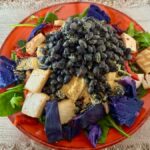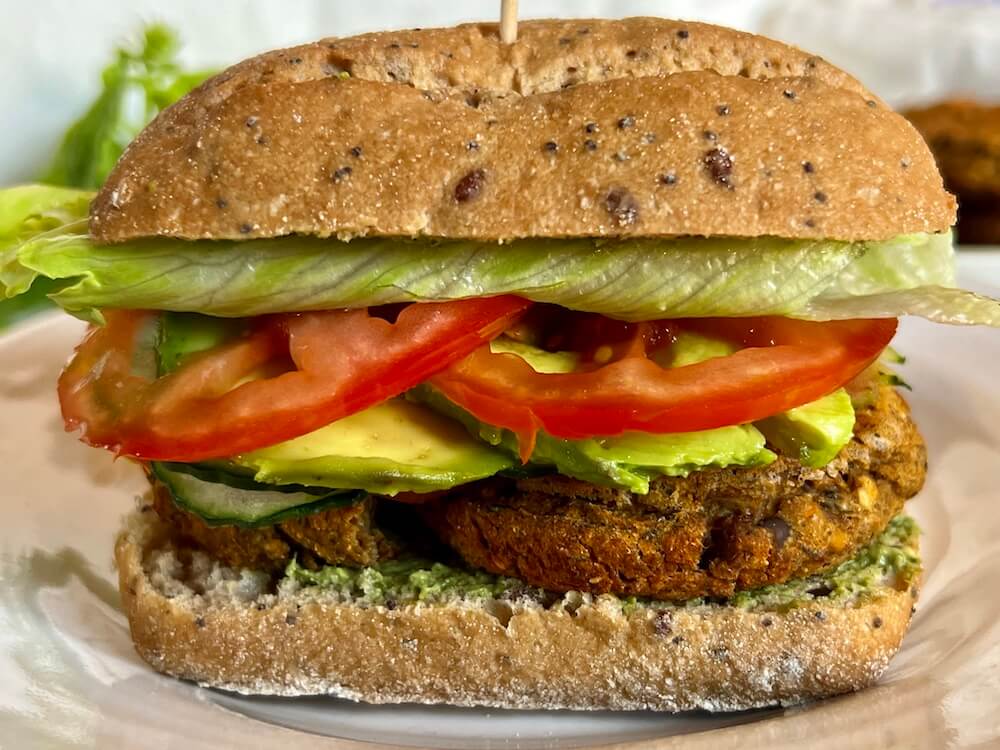Will OMAD slow your metabolism?
The question of whether OMAD slows our metabolism is one of the most often asked questions. So if you’re wondering, you’re not alone.
OMAD is an acronym for one meal a day and is the longest variation of intermittent fasting.
The problem is, this query gets tossed around passionately, with equally avid answers from both sides.
And the reason might have something to do with our perception of what it really means to slow our metabolism and whether or not it’s a problem for us.
You hear athletes to your right claiming that fasting slows your metabolism, and you hear those other athletes to your left, screaming that it won’t.
So who’s right?
Well before going on, the connection between OMAD and our metabolism is complex and has many, many variants. Our genes, age, sex, lifestyle, natural inclinations, habits, mindset (and more) will all affect how we respond to OMAD.
But there are some things we can do to make sure our OMAD lifestyle is everything we hoped it would be and doesn’t end up slowing us down or causing us muscle loss.
In other words, the question of whether OMAD will slow our metabolism needs to be looked at as part of the whole picture and held in balance with other aspects of OMAD.
Additionally, it’s helpful to look at what our principal reasons for doing OMAD are and whether OMAD or IF is better suited to us.
With such an array of health benefits, the effect OMAD can have on our metabolism should be viewed carefully and in context with the larger picture.
Table of Content
Firstly, What is Our Metabolism?
Our metabolism is the rate at which our body burns calories to create energy for our existence.
The speed of your metabolism stems largely from your genes, but there are some things that can speed it up and slow it down, to a degree.
Hormonal changes and medical conditions like diabetes and thyroid problems can all slow down your metabolism.
A fast metabolism will burn more calories than a slow metabolism in order to produce the same amount of energy.
Our metabolism converts calories into energy and is divided into three activities: RMR (resting metabolic rate), TEF (the thermic effect of food), and TEPA (the thermic effect of physical activity).
What is RMR?
RMR is the resting metabolic rate which is the conversion of calories to energy for maintenance of the entire body.
What is TEF?
TEF, or the thermic effect of food, refers to the increase in our metabolism which happens after eating.
The body must use some energy for digesting and utilising the nutrients in food, so there is a slight increase in metabolism after eating.
What is TEPA?
TEPA, or the thermal effect of exercise, is the increase in metabolism which is needed to fuel all types of physical exercise, from working out at the gym, to lifting a glass of water to your lips.
Metabolism and its Reaction to Food
Our metabolism’s designed to be a dynamic process which responds to our situation.
An important survival point is the ability of the metabolism to slow down in the absence of food. That’s how we humans were able to survive through drought periods or extended times without sustenance.
Dr Mindy Pelz, the author of Fast Like a Girl, explains that all human beings alive today most probably have what’s known as the thrifty gene, the gene enabling us to go without food.
The humans who didn’t have the gene and who couldn’t survive through the terrible droughts and famines actually perished, leaving only the stronger, more adaptable humans and their superbly adaptable thrifty gene.
When we don’t eat for extended periods, not only does our body switch over to burning body fat for energy, instead of sourcing energy from our food, it also may become slightly slower.
That’s basically by design, to save our life.
While this can cause a plateau in OMAD and stop weight loss, as a solution we can alter our routine to support the metabolism.
And if you’ve ever wondered whether we can do OMAD forever, this part is key – variation.
Instead of fearing the dreaded slow down of metabolism, by being aware of how it works we can use it to our advantage.
Instead of fasting every day for the same amount of hours, switch it around, so our metabolism doesn’t adjust and adapt to the one set routine.
Otherwise, it may quickly outsmart us as we find ourselves not losing weight despite not eating, the classic hurdle that so many people run into with traditional calorie-counting diets.
Fasting isn’t about calorie counting. Yes, you may go through the day in calorie deficit, but when you eat you eat fully.
You feast.
Fasting and then not eating properly when you do eat would be one sure fire way to attract possible problems in the future, and why it may seem hard to do OMAD.
Which is why it’s important to eat healthily during OMAD. Eating vegan WFPB on OMAD is a perfect way to set ourselves up for success.
Fasting isn’t dieting. It’s health-promoting and yes you will probably achieve great results in the fat-loss department as your body switches over to fat-burning mode, but the motivation goes way deeper than purely for weight loss.
It’s a lifestyle choice, and once it clicks it can become truly a golden key to having more energy, less fat, and feeling better.
How to Support Your Metabolism on OMAD
Muscle-mass encourages us to have a higher metabolic rate, as muscle-mass burns calories faster and thus raises the metabolism.
For this reason it’s important to include a good source of protein with your meal so that you support the metabolism and encourage muscle-mass growth (and maintenance).
And don’t underestimate the role of water in OMAD.
Exercise is also great for raising the metabolism so by including exercise in our daily lifestyle routine we set ourselves up for success.
Even better, include some resistance to build muscle.
My favourite way to do this is through hiking and yoga.
By shifting our eating routines around we can benefit from autophagy, weight loss and increased insulin sensitivity while keeping the metabolism on its toes, so to speak.
For example, you may practise OMAD on a few days of the week, eat a normal day on one of the days, and fast completely on another. Or you could intersperse 20:4 with OMAD and a day off.
Taking time off from fasting is just as important as the fasting itself, so if we’re looking for weight loss, the best thing is to do OMAD in balance with other types of intermittent fasting.
Dr Mindy Pelz on Will Fasting Slow Your Metabolism?
Conclusion on Will OMAD Slow Your Metabolism?
Even though fasting may cause your metabolism to slow down and adjust to the new situation it finds itself in (reduced calories), the benefits of fasting – losing weight, increased sensitivity to insulin, preventing or treating disease and improving health, generally outweigh any impact from a slowed metabolism.
Especially if we take care of our schedule and fasting routine, exercise workout and nutritional input.
Fasting will cause the metabolism to adjust.
At first, when you switch over to burning ketones the metabolism may be super-efficient at burning fat and any slowing down a small event. But if the body’s starved of calories over a prolonged period, then the metabolism will continue to adjust and this could eventually lead to a slower metabolism.
By making sure that fasting is intermixed with feasting you can avoid the problem by keeping the metabolism guessing and active. Fasting isn’t dieting and fasting isn’t about starving ourselves.
When we eat during OMAD, we should be eating a fully satisfying, nutritionally dense and balanced meal.
To support our metabolism we need to eat enough protein and not get stuck into one routine of fasting.
Therefore, the benefits from practising OMAD normally outweigh the possibility of a slowed metabolism but should be looked at as part of the whole picture.









There’s evidence supporting long term low calorie diets for increasing life span in animals. I think if omad puts you in this state then metabolism will slow down. If you maintain calories and protect muscle rmr probably won’t lower.
I think it is perhaps even desirable to lower rmr. If you’re a healthy weight and not sarcopenic then it’s likely to extend life span less painfully so than a very low calorie diet spanning 3+ meals per day.
Thank you for visiting and sharing your insights Karl!